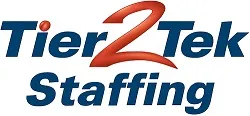SAP Interview Questions with Answers

When recruiting for SAP roles, it’s crucial for hiring managers and job seekers alike to be prepared with the right knowledge and questions. SAP systems are complex and integral to business operations, making the quality of hires particularly significant. We’ve compiled a comprehensive list of top SAP interview questions tailored for technical roles. These questions cover various aspects of SAP, from basic understanding to more complex technical functionalities, ensuring that both hiring managers and candidates can effectively evaluate and demonstrate expertise.
What is SAP and what does SAP stand for?
Answer: SAP stands for Systems, Applications, and Products in Data Processing. It is an enterprise resource planning (ERP) software used by organizations to manage business operations and customer relations.
Describe the SAP ERP system.
Answer: The SAP ERP system is a centralized system that supports all the essential functions of business operations. It includes modules like Finance (FI), Controlling (CO), Sales & Distribution (SD), Material Management (MM), and Human Resources (HR), among others.
What are the different types of modules in SAP?
Answer: SAP includes several modules, each focused on different areas. Key modules include Financial Accounting (FI), Controlling (CO), Sales and Distribution (SD), Material Management (MM), and Human Capital Management (HCM).
Explain the organizational structure in SAP MM.
Answer: In SAP MM, the organizational structure includes levels like Client, Company Code, Plant, Storage Location, and Purchase Organization. These levels help in mapping an organization’s structure to the SAP system for inventory management and procurement.
What is SAP S/4HANA?
Answer: SAP S/4HANA is an advanced ERP system designed to run on SAP’s HANA in-memory database. It offers enhanced performance and capabilities, including simplified data models, advanced analytics, and a user-friendly interface.
How does SAP Fiori enhance user experience?
Answer: SAP Fiori is a user interface or user experience design that provides a more responsive, modern, and user-friendly way to access SAP applications across desktops, tablets, and smartphones.
Can you explain what NetWeaver is?
Answer: SAP NetWeaver is an integrated technology platform that allows the integration and alignment of people, information, and business processes across technologies and organizations.
What is IDoc in SAP?
Answer: IDoc, short for Intermediate Document, is a standard data structure used in SAP for asynchronous transactions: that is, data transfer between systems.
What is the use of SAP BW/BI?
Answer: SAP Business Warehouse (BW) and Business Intelligence (BI) are SAP software components that provide powerful data warehousing and reporting capabilities to help organizations make informed decisions.
Describe the PGI process in SAP.
Answer: Post Goods Issue (PGI) is a process in SAP SD that occurs when the goods are physically shipped and billed to the customer, resulting in a reduction in inventory.
What are SAP Business One and ECC?
Answer: SAP Business One is a smaller-scale ERP solution designed for small to medium-sized enterprises, whereas ECC (ERP Central Component) is a larger scale solution designed for medium to large enterprises.
Explain how SAP CRM functions.
Answer: SAP CRM (Customer Relationship Management) helps organizations manage their relationship with customers by supporting sales, service, and marketing processes, enhancing customer satisfaction and loyalty.
What is the difference between SAP R/3 and SAP ECC?
Answer: SAP R/3 refers to the former version of SAP’s enterprise resource planning software, which was replaced by SAP ECC. ECC stands for ERP Central Component, offering additional features and capabilities.
What role does SAP HCM play?
Answer: SAP HCM (Human Capital Management) is focused on HR modules like Payroll, Time Management, and Personal Administration. It helps organizations manage their human resources effectively.
How do you create a purchase order in SAP?
Answer: A purchase order in SAP is created using the transaction code ME21N, where users can specify the necessary details like vendor, material, quantity, and pricing.
Explain the concept of a document type in SAP.
Answer: Document types in SAP are used to differentiate between the various business transactions like invoices, sales orders, and purchase orders. They help in defining the properties of these documents.
What is a Sales Area and why is it important?
Answer: A Sales Area in SAP SD combines sales organization, distribution channel, and division. It is important because it defines the distribution channel a company uses to sell its products and services.
What are the functions of material management in SAP?
Answer: Material Management in SAP deals with procurement process, inventory management, master data (material and vendor master), valuation of material, and invoice verification.
What is a movement type in SAP?
Answer: Movement types in SAP MM are used to represent a specific type of stock posting in inventory. They indicate what type of movement is involved, such as receiving, issuing, or transferring stock.
Explain SAP PI and its importance.
Answer: SAP PI (Process Integration) is designed to facilitate the integration of SAP and non-SAP applications within an organization using different communication protocols.
What are SAP’s capabilities in data processing?
Answer: SAP provides extensive data processing capabilities through its various modules like SAP BW for data warehousing, SAP BusinessObjects for business intelligence, and SAP HANA for high-performance in-memory database technology.
Discuss the importance of the implementation phase in an SAP project.
Answer: The implementation phase is critical as it involves setting up the SAP system according to the needs of the business, data migration, user training, and testing. It determines the success of the SAP installation in meeting business needs.
What are user exits and customer exits in SAP?
Answer: User exits and customer exits are enhancement points that allow developers to add custom code to standard SAP programs without modifying the original code.
What is SAP LSMW?
Answer: SAP LSMW (Legacy System Migration Workbench) is a tool that supports the transfer of data from non-SAP systems (“legacy systems”) to SAP systems. It’s a popular tool during initial data migration activities.
How is data security handled in SAP?
Answer: Data security in SAP is managed through authorization checks, where users are only granted access to the data necessary for their role. This is supported by SAP’s robust security architecture.
Describe the Master Data in SAP.
Answer: Master Data is the core data that is essential to operations in a specific business or business unit. This includes data about customers, vendors, partners, materials, and employees.
How does SAP support mobile applications?
Answer: SAP supports mobile applications through SAP Mobile Platform (SMP) and SAP Fiori, which enable the creation of mobile apps that can access SAP backend systems securely.
Explain the SAP reference model.
Answer: The SAP reference model is a comprehensive model of all enterprise processes and functions represented in SAP software. It serves as a blueprint for customizing the software to individual needs.
What is the significance of BAPI in SAP?
Answer: BAPI (Business Application Programming Interface) is a defined interface that allows the integration of third-party applications with SAP modules. These are standardized programming interfaces enabling external access to business processes and data.
How do batch input sessions work?
Answer: Batch input sessions allow for the automated data transfer from external systems to SAP. Data is processed in groups (batches), ensuring efficient and error-free data entry.
Common Technologies Used in SAP

SAP incorporates a range of technologies to enhance its enterprise resource planning (ERP) capabilities. These include:
- SAP HANA: An in-memory, column-oriented, relational database management system that enhances the processing speed of applications.
- SAP NetWeaver: A technology platform that allows the integration of business processes and databases from multiple sources.
- SAP Fiori: A user interface or user experience design to provide a more responsive and user-friendly way to access SAP applications.
- SAP Business Warehouse (BW): A comprehensive data warehousing product that provides reporting and analysis capabilities.
- SAP S/4HANA: The next-generation ERP suite designed to offer simplified data models, no aggregates, no indices, and easier ways to extend the software.
- SAP BusinessObjects: A suite of front-end applications that allow business users to view, sort, and analyze business intelligence data.
- SAP SuccessFactors: A cloud-based human capital management solution for talent management, core HR, and HR analytics.
- SAP Concur: Provides travel and expense management services to organizations, integrated into the broader SAP ecosystem.
- SAP Ariba: A supply chain, procurement service to help companies manage their spend in an efficient manner.
- SAP Cloud Platform: An open platform-as-a-service providing unique in-memory database and application services.
Key Expertise Areas in SAP
SAP expertise encompasses a variety of specialized skills and knowledge areas critical to effectively implementing and managing SAP systems:
- ERP Implementation and Management: Proficiency in deploying and managing SAP ERP systems across different modules such as FI, CO, SD, MM, and HR.
- Database Management: Skills in handling SAP databases, particularly SAP HANA, for optimized data storage and retrieval.
- Business Process Integration: Ability to integrate and streamline various business processes within the SAP framework to improve efficiency and data flow.
- SAP Configuration: Expertise in customizing SAP systems according to the specific needs of a business, including setting up and maintaining various modules.
- Programming in ABAP and Fiori: Knowledge of SAP’s proprietary programming languages, ABAP for backend development, and Fiori for frontend design.
- Data Migration and Management: Skills in managing data migration projects from legacy systems to SAP, ensuring data integrity and accuracy.
- SAP S/4HANA Migration: Specialized knowledge in migrating from SAP ECC to the more advanced SAP S/4HANA system.
- Change Management: Ability to manage organizational changes that accompany SAP implementation, including training users and adjusting business processes.
- Security and Compliance: Expertise in configuring and maintaining SAP security protocols to protect data and comply with regulations.
- Business Intelligence and Analytics: Skills in utilizing SAP Business Warehouse and BusinessObjects to create powerful data analysis and reporting solutions.
Need to Hire SAP Experts?

If you’re looking to bolster your team with top-tier SAP professionals, Tier2Tek Staffing is here to connect you with the best talent in the industry. We specialize in swiftly identifying and placing highly skilled SAP experts who can drive your business forward.
